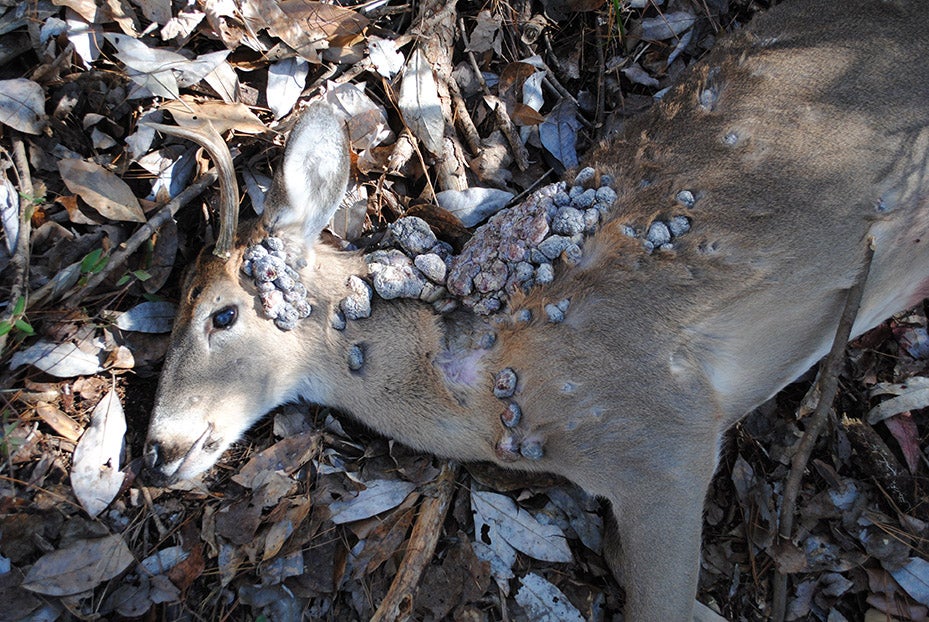Cause
Cutaneous fibromas, more commonly called deer warts, are hairless tumors found on the skin of white-tailed deer. Fibromas are most often caused by host-specific papillomavirus infections, but also can be caused by host-specific poxviruses.
Species Affected
The viruses that cause fibromas in deer are species-specific, so other wildlife species and livestock should not be affected. These viruses are also not known to infect humans.
Distribution of Disease
Fibromas occur in white-tailed deer throughout their range, including Alabama.
Significance
Fibromas rarely cause deer serious health problems, but their location on the body can interfere with sight, eating, breathing and even walking. Fibromas typically only are attached to the skin of deer and their presence is usually not detectable after skinning the deer. Occasionally, larger fibromas may break open, which creates a path for bacterial infection. This secondary infection can create additional health issues for the deer.
Transmission
The virus is transmitted from deer to deer and in one of two ways: 1) biting insects or 2) scratched or broken skin coming in contact with an infected animal, or a surface (i.e., plants, feeders, etc.) brushed by an infected animal. Fibromas are more common in bucks, so sparring and fighting may be an important means of spreading the virus among a local deer population.
Clinical Signs
Fleshy growths attached to the skin are the only signs of infection by the virus. These growths are usually smooth, firm and covered with hairless black or gray skin. Sometimes the surface of the fibromas will have a roughened wart-like texture. Growths vary in size from less than one-half inch to greater than 8 inches in diameter and can be lone growths or in clumps. Larger fibromas or large clumps of fibromas can cause issues with walking, seeing, eating or breathing.











